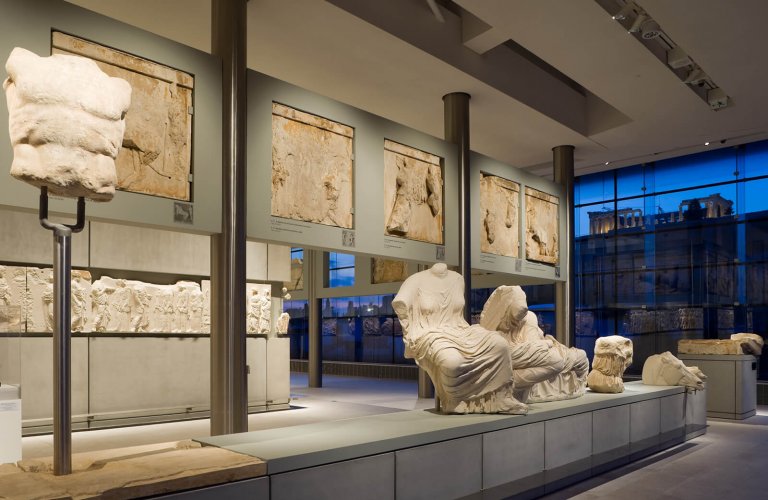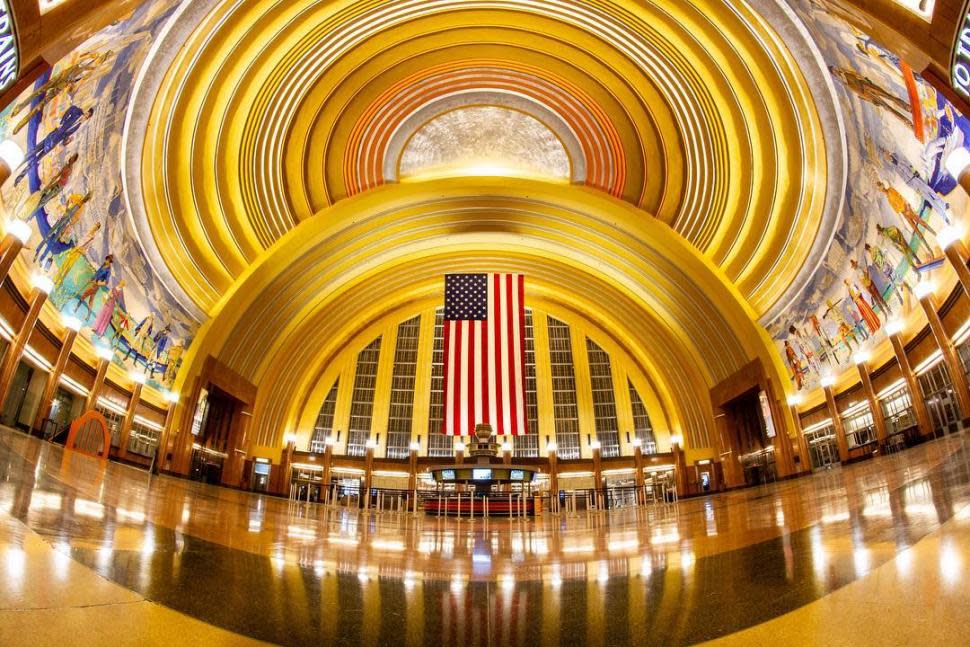For offbeat art, it’s hard to beat the American Visionary Art Museum in Baltimore.
Thank YOU! My memory is poor, we visited in 1975, and it indeed was Abilene!
I’ll see your American Visionary Art Museum and raise you one Museum of Bad Art.
I’ve been there. It’s truly awful art.
In your defense, that was almost 50 years ago, and Salina and Abilene are only 25 miles apart on I-70.
Second the Rosicrucian museum. They are not at all obnoxious about pushing their agenda.
I don’t remember anyone mentioning the Nuclear Testing Museum in Las Vegas, only a few blocks off the Strip. Great place.
By actual count, I’ve been to nearly one-third of all the museums mentioned so far in this thread (43 out of 137). For 12 years I worked at the Smithsonian’s National Air and Space Museum in D.C., and for the next 24 years I was in a museum-adjacent field, giant-screen (e.g. IMAX) theaters. So I’ve been to dozens and dozens of museums, including most of the science centers with GS theaters in the U.S. and Canada, and many of those in Western Europe.
Rather than rehash any of the ones already discussed, I’ll highlight a few I’ve enjoyed that haven’t been touched on yet.
The Vasa Museum in Stockholm, Sweden, “displays the only almost fully intact 17th-century ship that has ever been salvaged, the 64-gun warship Vasa that sank on her maiden voyage in 1628.”
The ship sank after sailing roughly 1,300 m (1,400 yd) into her maiden voyage on 10 August 1628. She fell into obscurity after most of her valuable bronze cannons were salvaged in the 17th century, until she was located again in the late 1950s in a busy shipping area in Stockholm harbor.
The ship was built on the orders of the King of Sweden Gustavus Adolphus as part of the military expansion he initiated in a war with Poland-Lithuania (1621–1629). […] Richly decorated as a symbol of the king’s ambitions for Sweden and himself, upon completion she was one of the most powerfully armed vessels in the world. However, Vasa was dangerously unstable, with too much weight in the upper structure of the hull. Despite this lack of stability, she was ordered to sea and sank only a few minutes after encountering a wind stronger than a breeze.
My wife and I visited Athens last year and were very impressed by the New Acropolis Museum. It is a magnificent structure, beautifully laid out, and located on top of a working archaeological site. The highlight is the Parthenon Gallery on the top floor, a glass-walled chamber that wraps around a rectangular core whose orientation and dimensions match those of the Parthenon, which is visible out the windows a few hundred meters away.
The outer walls of the core incorporate the relief-carved blocks of the temple’s Ionic frieze, mounted in the same position as they held on the monument, but at a lower height for better viewing. The metopes are presented in pairs between the steel columns of the hall, which have the same number as the Parthenon’s columns, while the colossal figures once displayed in the building’s two pediments have been mounted on low pedestals at the east and west side of the gallery, where they are visible from all directions.
The exhibition combines the original marble sculptures with plaster copies of those retained in the British Museum or other foreign museums. The glass walls enclosing the gallery provide natural lighting and allow a direct line of sight between the sculptures and the monument from which they come.

(Note the real Parthenon out the window on the upper right.)
The 6th Floor Museum in Dealy Plaza, Dallas, has one of the most effective designs I’ve ever experienced in a museum. I’m spoilering it because if you haven’t been, you really need to experience it without expectations. (I was there many years ago. It may have changed.)
You enter along a wall that recounts some of the general history of the early 1960s, then you turn a corner, and you’re in the kill zone. All of a sudden, without any preparation, you’re seeing images of the assassination. I expected some form of build-up, but the layout just throws you right into it. It’s shocking, just as the actual assassination was. I have never seen a design so effectively embody the experience it’s depicting.
The mentions above of the Musee D’Orsay (definitely one of my favorites) reminded me of the Cincinnati Museum Center, which is also located inside a former grand train station. The enormous structure features a children’s museum, a science museum, a history museum, and more, and its grand rotunda is just spectacular.
Anyone know of any other museums in former train stations? The only other one I can recall right now is the Science Museum of Virginia.
Excellent post. And I forgot about the Cincinnati Museum Center. We’ve been there a couple times. Very impressive.
I went to the Acropolis Museum last fall. It is indeed very nice, but I can’t say it wowed me. I think it might just be the subject matter more than anything on my part.
Omaha, Nebraska. A great history museum experience centering on the United State’s expansion westward, beginning with the Union Pacific Railroad’s establishment of the first railhead hoping to lay track all the way to the Pacific coast.
Now that you are in Omaha, there is also the Joslyn Art Museum, repository of the art treasures of said railroad tycoons, joined by the meatpacking and stockyard tycoons said railroad made possible.
Then there is a few miles away the aforementioned 1# in the US Henry Doorly Zoo and Aquarium.
A very few minutes (28) away on I 80 is the Strategic Air Command Air and Space Museum, which has their own ‘Blackbird’ on display inside.
Easily 5 days of incredible museums within 30 miles of one another.
ETA: oops-that aforementioned #1 US zoo and aquarium is actually mentioned in a different thread.
I apologize.
How did I not know about this place? I think I might go next week.
I should have remembered this one! We went to it when we docked in Stockholm. It is awesome.
My only regret was that they had a Vasa jigsaw puzzle in the gift shop, which I didn’t buy because I didn’t want to lug it home and figured I could find it on line. I never did find it.
Maybe one similar to this?
Another of my favorites is the Archaearium at Jamestown. You walk through the archaeological site of the original fort and then in the museum you can see the artifacts that were found. It’s also on top of an old site which you can see through glass floors.
Well, that is awesome, but a lot more expensive than the one in the gift shop.
But I might be buying myself a present … Thanks!
According to Google Maps, there is the Mayville Depot Museum in Mayville NY, but I’m assuming that “museums in former train stations that are about trains” don’t count. Plus, I’ve never been there when it was an actual museum to confirm this. Decades ago, there were a couple of historical displays there describing what it used to be: more informative than the average roadside sign, but still not a full-blown museum yet.
But I mainly posted here to comment that I love the Cincinnati Union Terminal, for entirely nostalgic purposes. I have also never been there, but it bears a strong resemblance to the Justice League headquarters which it inspired.
Union Station in Tacoma was converted to a courthouse several years ago. It’s advacent to the Tacoma Glass Museum, and includes some Dale Chihuly works in the rotunda.
Tacoma is Chihuly’s hometown. There’s also a McDonald’s there with a Chihuly.
I’ve been to the Museum of Pop Culture a few times: Current Exhibitions in Seattle WA | Museum of Pop Culture
They used to have a fantastic display of Jimmy Hendrix’s stage costumes–but they change up the exhibits, so I don’t know if that’s still there.
And while you’re in Seattle, you can also visit this “Pinball Museum” (ie, a long, narrow room filled with old pinball machines): Game List | Seattle Pinball Museum
Nice thing about this one: no need to insert quarters–you pay an admission fee, then you can play all day. They give you a wristband so you can come and go as you please.
ETA – I’m also a fan of this museum someone else mentioned: the Musical Instrument Museum in Phoenix. But don’t try to see it all in one day–the place is huge.
I forgot to mention one of my favorite experiences in a museum. A number of years ago I had been reading about and watching shows about the problem of longitude and how it was solved. It’s an amazing story that features a lone, self-taught genius who labored for forty years to perfect a clock that would work at sea, fighting the scientific establishment of the day for recognition and to be awarded the huge cash prize that was rightfully his. Eventually it took action by the King to see that some justice was done. And the bad guy in the story is Edmund Halley, yes, the comet guy.
Perhaps the best book on the subject is by Dava Sobel. (I own a first edition she signed for me, but that’s another story.)
Around that time I happened to be in London, so I naturally went to Greenwich, where they have Harrison’s H1, H2, H3, and H4 clocks. I asked one of the docents where they were, and we got to talking about them. He was apparently impressed by the depth of my knowledge on the subject, because he allowed me to join a private training session for other docents led by the chief curator of the Harrison clocks, during which he was going to wind one of them. That was quite an honor and a pleasure.



